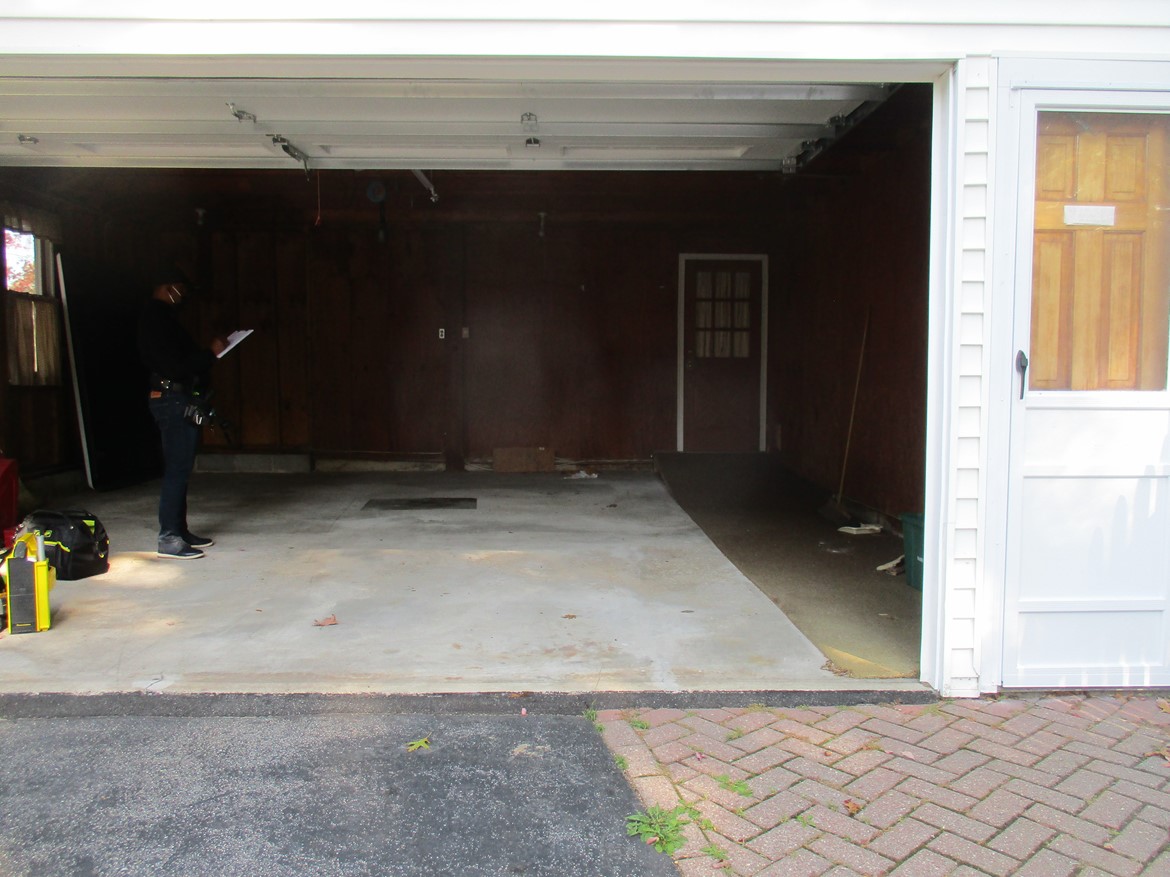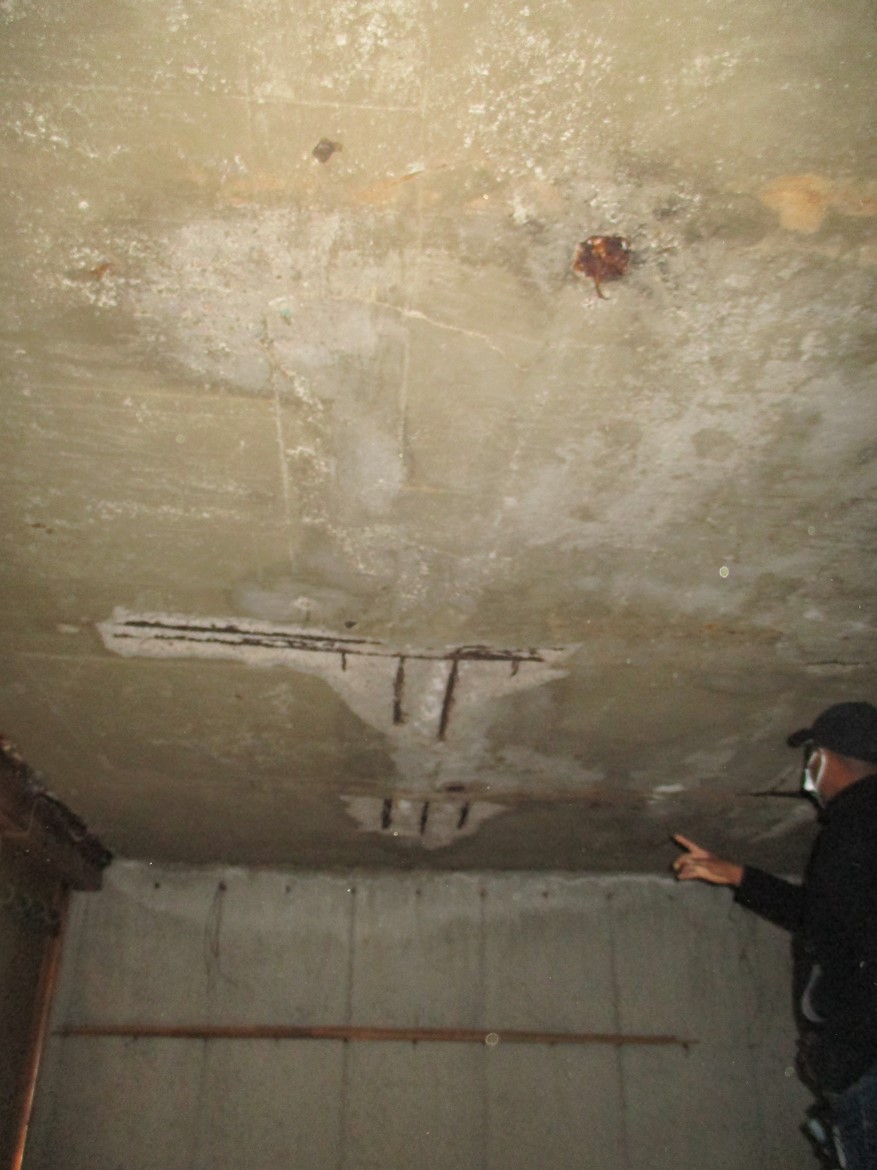
Elevated Garage Slabs
By Dan Martel, P.E.
Around here, most residential garages, whether attached to the house or detached, include a concrete slab-on-grade. Concrete slabs-on-grade are strong, durable, and easy to maintain. To provide more usable square footage, garage floors are sometimes built elevated – we’ve designed a few ourselves using framing systems like cold-formed steel joists, pre-stressed concrete plank, and structural steel beams. When maintained (especially when water is kept off them), elevated concrete slabs can last for a long time. When not maintained, slabs can deteriorate quickly and are expensive to address.
We have been involved in the repair of three different elevated concrete garage slabs in the last year. Here is a seemingly typical two-car attached garage.

But visit the basement and you’ll see the concrete slab is elevated, providing enclosed, usable space below – most recently used as a workshop and extra storage. This slab, built in the 1970’s, may not have been built with good positive pitch to shed water dripping of cars onto the driveway. Or perhaps it was pitched properly but was overloaded with cars, causing it to sag. Either way, when we inspected it, we measured sag that allowed water to pond in multiple areas for many years.
In New England, when water drips off our cars in the winter, it often contains lots of salt, which degrades the cementitious ingredients (the glue) in concrete. And when steel reinforcing rusts, it expands and breaks the bond with the concrete. Here we observed rusted reinforcing bars, which expanded and popped the concrete off below, also known as spalling.

Because of the frequent water intrusion, this slab is damaged beyond the point of reasonable repair. We expect that if the slab had positive drainage to the driveway and a waterproof concrete epoxy was maintained, it could have been useful for much longer.
More Articles From...
| This Category | Architectural Design, Engineered Consultations, Home Repairs, Residential Engineering, Structural Design, Structural Engineering |
| This Author | Dan Martel, P.E. |
